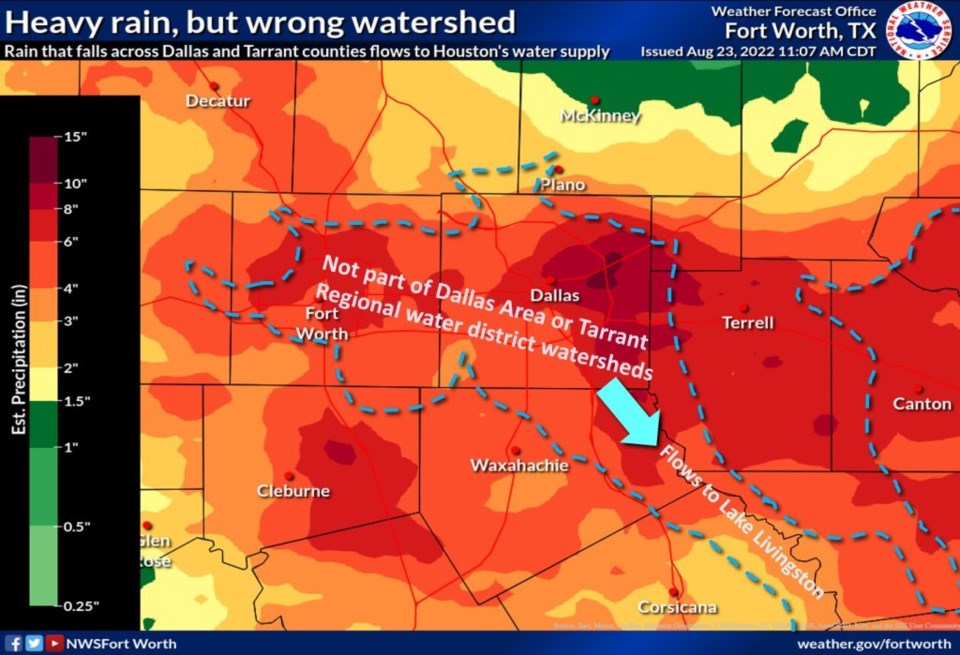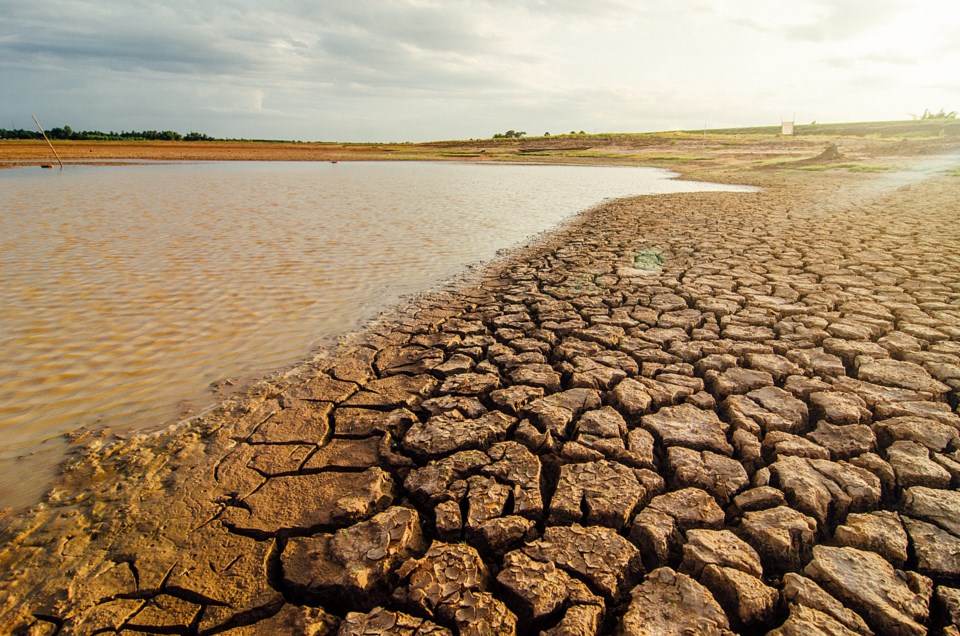This summer has seen its fair share of strange weather. On Monday, August 22, 9.19 inches of rain had fallen within 24 hours, making this the second wettest August in the Dallas-Fort Worth area since record-keeping began in 1899. The whole month combined reached a total of 10.08 inches, only surpassed by 0.25 inches in August 1915, when a hurricane hit Galveston.
An extra 0.30 inches of precipitation had fallen by Tuesday, awarding 2022 with the wettest August in DFW’s history. We still have another week to go and more rain is in the forecast.
After living through 67 consecutive days without measurable precipitation, this seemed to be the rain everyone was praying for. Yet this week’s deluge, which made Gov. Abbott declare emergencies in over 20 counties, has only made a dent in the ongoing drought. According to the Texas Tribune, drier conditions are expected throughout September and the National Weather Service Fort Worth office explained this rain won’t even affect the area’s water districts as most of the water will flow to Lake Livingston and be Houston’s water supply.

This means the state will stay on alert as the drought conditions might continue into the fall and winter. As reported by NBCDFW, the Texas A&M Forest Service officials have warned Texans that the recent rain could offer only a short-lived break from the fire activity.
According to NBCDFW, this has been the worst year for fire conditions in Texas history. An official statement from the Texas A&M University System reported that Texas A&M Forest Service has responded to 1,682 wildfires on 542,393 acres this year. That represents a 40 percent increase in the number of fires when compared to the annual average.
If wildfires spark back up as the sky clears and the land dries out, the Texas A&M Forest Service focus will go back to fighting fires.




